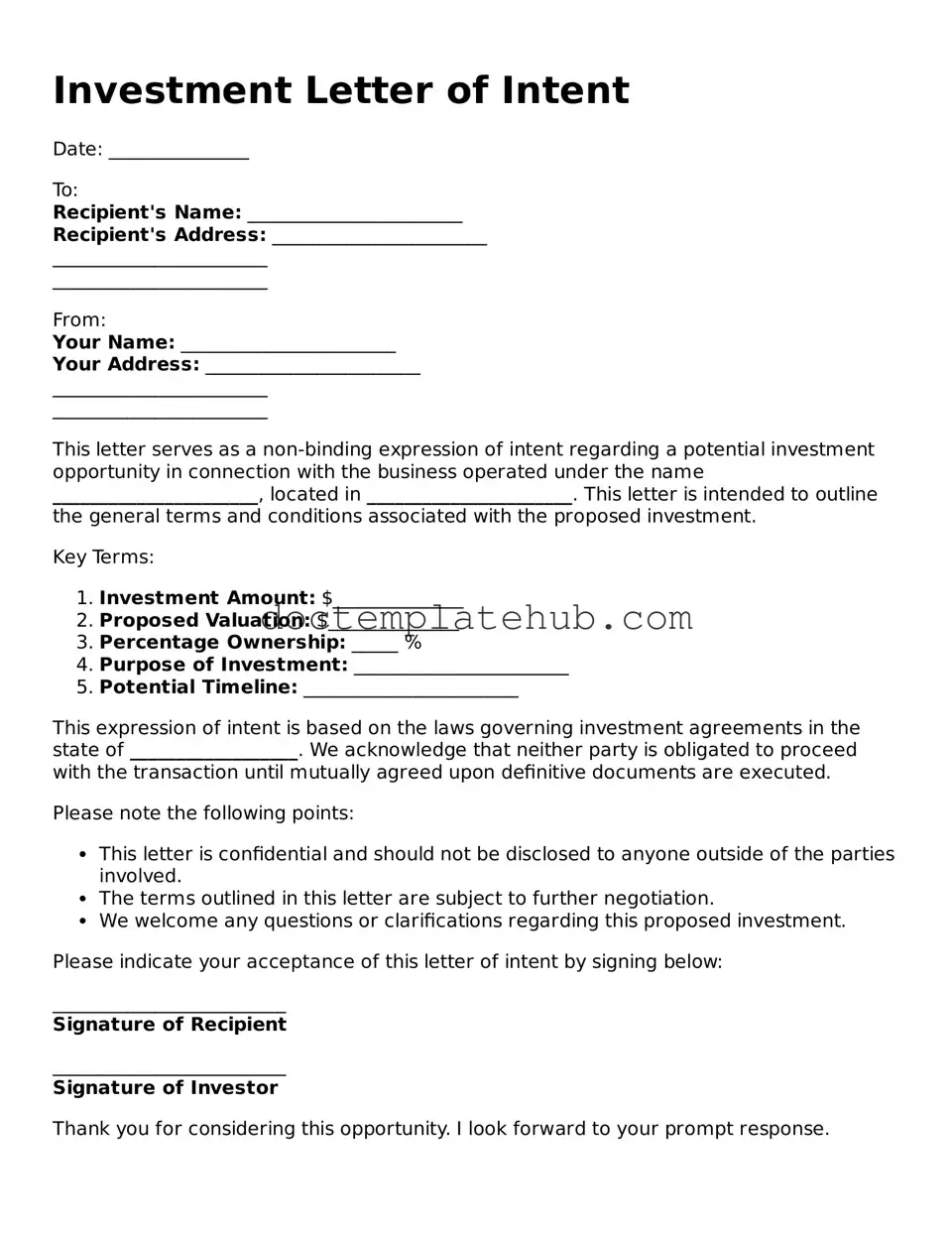What is an Investment Letter of Intent?
An Investment Letter of Intent (LOI) is a document that outlines the preliminary understanding between parties interested in making an investment. It typically includes key terms, conditions, and intentions of the parties involved. While it is not a legally binding contract, it serves as a starting point for further negotiations.
Who should use an Investment Letter of Intent?
This form is useful for individuals or entities looking to make an investment in a business or project. It can be used by investors, entrepreneurs, or companies seeking funding. The LOI helps clarify intentions before formal agreements are drafted.
What information is typically included in the form?
The Investment Letter of Intent usually includes details such as the amount of the investment, the purpose of the investment, the timeline for the investment, and any conditions that need to be met. It may also outline the rights and responsibilities of each party.
Is the Investment Letter of Intent legally binding?
Generally, an Investment Letter of Intent is not legally binding. It serves as a framework for negotiation and does not create enforceable obligations. However, some sections may be binding if explicitly stated, such as confidentiality agreements or exclusivity clauses.
How does an Investment Letter of Intent benefit both parties?
This document benefits both parties by providing a clear outline of expectations. It helps prevent misunderstandings and ensures that both sides are on the same page before moving forward. It can also save time and resources during the negotiation process.
Can the terms in the Investment Letter of Intent be changed?
Yes, the terms in the Investment Letter of Intent can be negotiated and changed. Since it is a preliminary document, both parties can discuss and modify the terms until they reach a mutual agreement. This flexibility is one of its key advantages.
What should I do after signing the Investment Letter of Intent?
After signing the LOI, the next step is usually to draft a more detailed and binding agreement. This might include a purchase agreement or investment contract. It’s important to work with legal professionals to ensure all terms are accurately captured and legally enforceable.
Where can I find a template for an Investment Letter of Intent?
You can find templates for an Investment Letter of Intent online or through legal document preparation services. It’s important to choose a template that fits your specific needs and to customize it to reflect the unique aspects of your investment situation.
